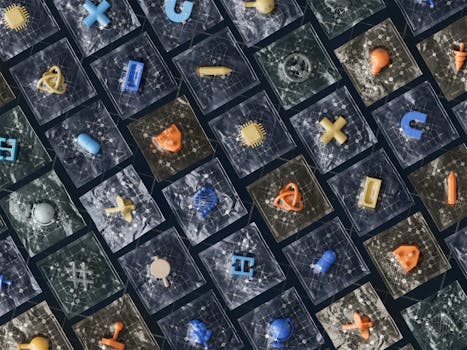Using AI Tools in Photo Editing
Photo editing has undergone a significant transformation with the introduction of AI tools. These advanced technologies have simplified complex editing tasks, making them accessible to both amateur and professional photographers. AI tools are revolutionizing photo editing by automating tasks that used to require hours of manual work, thereby enhancing creativity and efficiency.

AI in photo editing isn't just about adding filters or enhancing colors; it’s about intelligent processing that understands the content of images. From retouching portraits to creating stunning landscapes, AI tools like Adobe Photoshop's Sensei and Luminar AI are leading the way. These tools can identify objects, adjust lighting, and even replace skies with a few clicks.
The integration of AI in photo editing software is not only a time-saver but also a game-changer in terms of quality. For instance, AI algorithms can detect and correct imperfections that might be overlooked by the human eye. This technological leap means that photographers can focus more on their creative process rather than getting bogged down by technical details.
Understanding AI-Powered Tools
AI-powered tools are designed to assist photographers in various aspects of photo editing. They utilize machine learning algorithms to analyze photos and make precise adjustments automatically. One prominent example is Adobe Photoshop’s Sensei, which offers features like content-aware fill, auto-tagging, and facial recognition.
Sensei's content-aware fill allows users to remove unwanted objects from photos seamlessly. The tool intelligently fills in the gaps by analyzing the surrounding pixels, making the edit appear natural. Another feature, auto-tagging, helps organize large photo libraries by automatically assigning tags based on image content.
Facial recognition technology in AI tools enhances portrait editing by identifying facial features and applying targeted adjustments. This includes smoothing skin textures, brightening eyes, and even adjusting facial expressions subtly.
Efficiency and Time-Saving
One of the most significant advantages of using AI tools in photo editing is the time saved on repetitive tasks. Tools like Luminar AI offer templates that can be applied to multiple photos simultaneously, ensuring consistency across a series of images. This batch processing capability is particularly beneficial for event photographers who deal with hundreds or even thousands of photos.
Moreover, AI tools reduce the learning curve for beginners by automating complex tasks. For example, automatic sky replacement in Luminar AI allows users to change the sky in their photos without needing advanced masking skills. The tool intelligently blends the new sky with the existing elements in the photo, maintaining a realistic appearance.
This efficiency extends to mobile apps as well. Apps like Snapseed and Lightroom Mobile incorporate AI features that enable quick edits on the go. These apps are equipped with one-tap enhancements that analyze the photo and apply optimal adjustments instantly.
Enhancing Creativity
AI tools are not just about automation; they also open new avenues for creativity. With features like style transfer and neural filters, photographers can experiment with different artistic effects effortlessly. Style transfer uses machine learning to apply the style of one image to another, creating unique visual effects.
Neural filters in Adobe Photoshop allow users to apply various artistic effects such as turning photos into paintings or giving them a vintage look. These filters use deep learning algorithms to understand and replicate different art styles accurately.
The creative possibilities are endless with AI-powered tools. Photographers can now explore new styles and techniques without being restricted by their technical skills. This democratization of creativity means that anyone can produce professional-quality edits with minimal effort.
Improving Image Quality
Apart from enhancing creativity, AI tools also play a crucial role in improving image quality. Tools like Topaz Labs' Sharpen AI use artificial intelligence to analyze images and sharpen them without introducing noise or artifacts. This is particularly useful for low-light photography where images tend to be blurry or grainy.
Noise reduction is another area where AI excels. Tools like DxO PhotoLab use deep learning algorithms to identify and reduce noise while preserving details in the image. This results in cleaner and sharper photos, even when shooting at high ISO settings.
AI also assists in color correction by analyzing the image and suggesting optimal adjustments for brightness, contrast, and saturation. This ensures that colors appear natural and vibrant without being overdone.
User-Friendly Interfaces
The user interfaces of AI-powered photo editing tools are designed to be intuitive and user-friendly. This makes them accessible to photographers of all skill levels. For instance, Luminar AI's interface is clean and straightforward, with sliders for adjusting various parameters. Users can see real-time previews of their edits, making it easier to fine-tune adjustments.
Adobe Lightroom has also integrated AI features into its user interface seamlessly. The Auto Tone feature analyzes the photo and applies adjustments with a single click, providing a great starting point for further edits.
These user-friendly interfaces ensure that photographers can focus more on their creative vision rather than getting overwhelmed by technical complexities.
| Tool | Key Features | Use Case |
|---|---|---|
| Adobe Photoshop Sensei | Content-Aware Fill, Auto-Tagging, Facial Recognition | Portrait Editing |
| Luminar AI | Sky Replacement, Templates, Batch Processing | Landscape Photography |
| Topaz Sharpen AI | Image Sharpening without Noise | Low-Light Photography |
| DxO PhotoLab | Noise Reduction, Color Correction | General Photography |
| Snapseed | One-Tap Enhancements, Filters | Mobile Editing |
The Future of Photo Editing with AI
The future of photo editing looks promising with continuous advancements in AI technology. We can expect more sophisticated tools that offer even greater precision and creative possibilities. Features like real-time object tracking and advanced scene recognition will further enhance the editing process.
The integration of AI with other emerging technologies such as augmented reality (AR) will also open new dimensions for photo editing. Imagine being able to see real-time AR previews of your edits before applying them permanently.